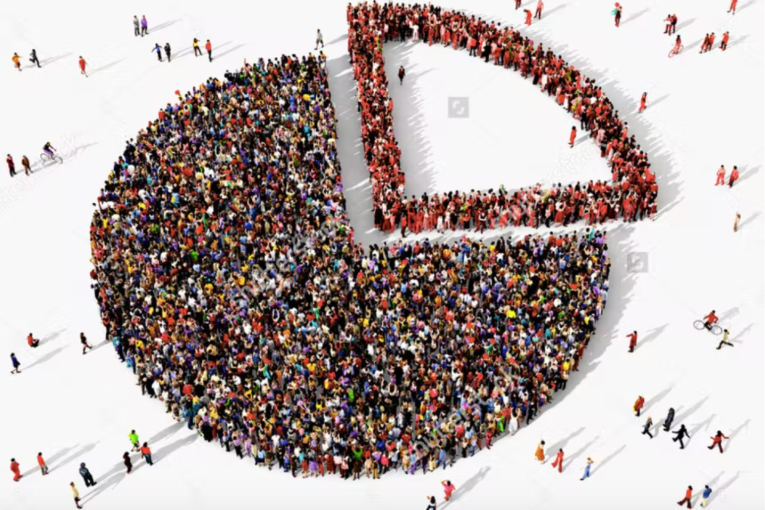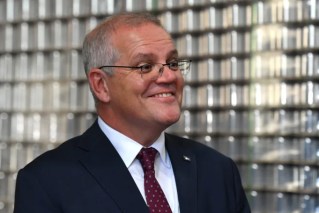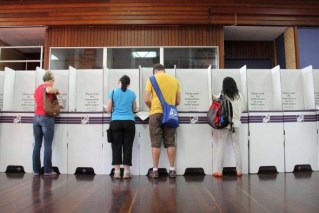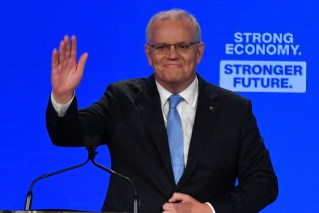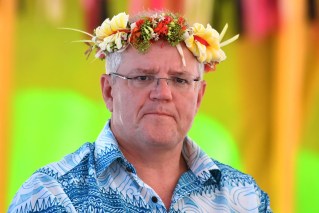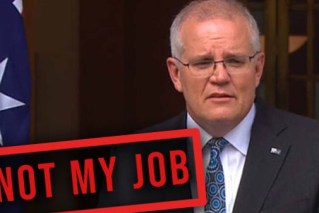Close but no cigar: Why it’s most unlikely we’re headed for a hung parliament
As Paul Keating might say, every galah in a pet shop is predicting a hung parliament. Dennis Atkins tests the noise.

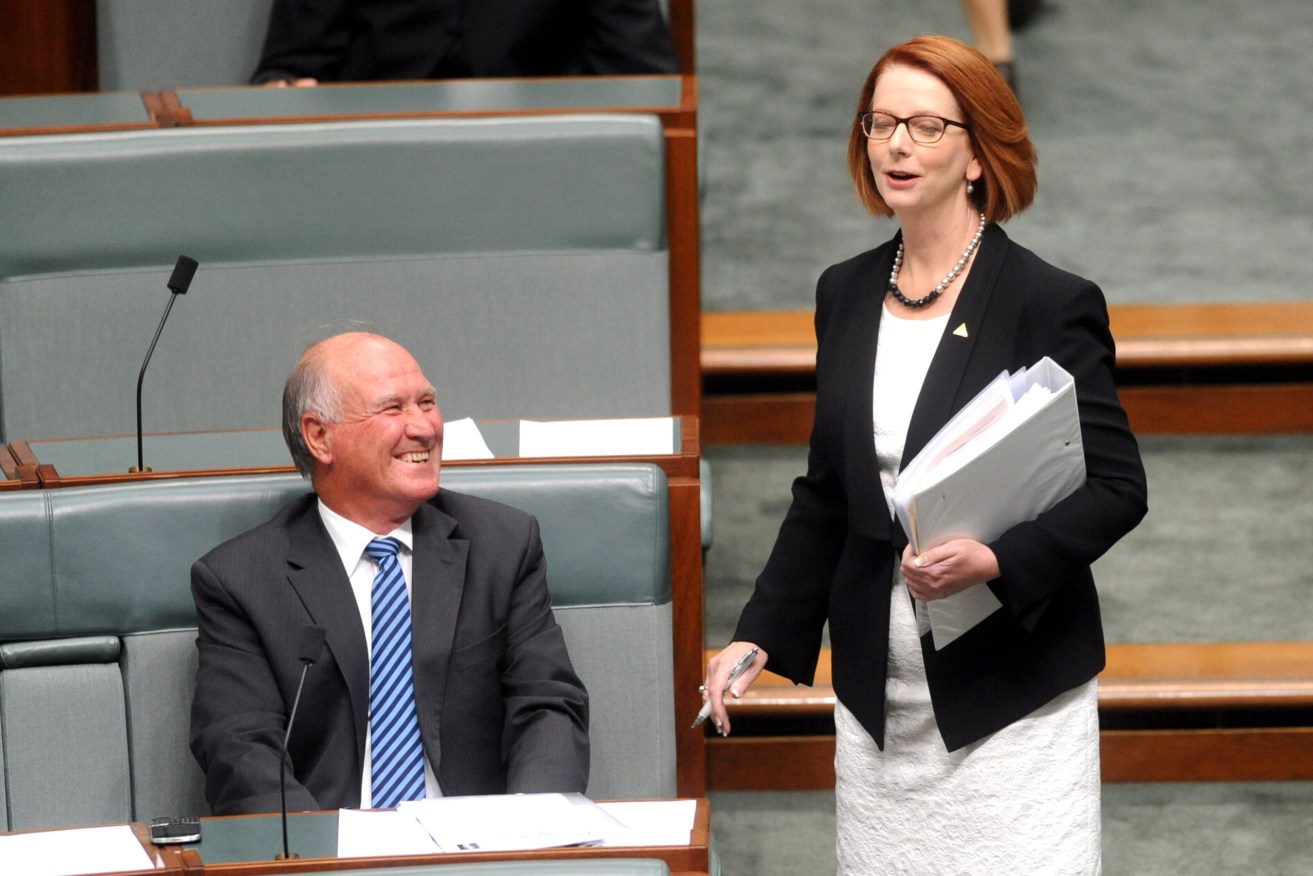
Prime Minister Julia Gillard speaks to independent MP Tony Windsor as she arrives for House of Representatives question time at Parliament House in Canberra, Tuesday, March 12, 2013. (AAP Image/Alan Porritt)
There’s a good reason Australian governments are not formed by a one party going into an arrangement or deal with independents or minor parties.
It has only really happened twice – in 1940 and 2010 when, first, the conservative prime minister Robert Menzies governed with two independents and, then, Labor’s Julia Gillard governed with support from a Greens MP and three of the four Lower House independents.
Prior to 1940, many governments were formed through loose coalitions, deals struck during campaigns and opportunistic arrangements that either endured or fell apart.
The reason we haven’t had “hung parliaments” since the 1940 Menzies deal, apart from the brief time a decade ago, is the strength of the two party system and the bitumen-laid path to power – compulsory preferential voting.
It’s only 11 days into a 42 day election campaign but we are being told a hung parliament is all but inevitable.
Sorry to break the Canberra bubble’s conventional wisdom but it isn’t and it is quite unlikely to happen.
The supposed evidence to why we are in hung parliament territory is because both the Coalition and Labor have primary votes at or just above the mid-30 percent zone.
According to the “wisdom”, you can’t win a majority of seats with such a low primary vote. Again, that’s not what history tells us. You can and people need to look no further than Queensland to find that evidence.
In 2017, Annastacia Palaszczuk’s Labor Party had a miserable primary vote of 35.2 percent which, after preferences, translated into a two party vote of just under 51.5 percent. This was achieved with a preference flow to Labor weaker than the historic norm seen in federal elections, as Tasmanian elections savant Kevin Bonham explains.
Bonham points out the historic low primary in a federal poll was the 1990 election when Bob Hawke’s Labor Government was reelected with 39.4 percent of the vote which was pushed to the squeaky winning level of 50.1 percent two party support.
To further make his point, Bonham adds Labor could have taken government in recent elections with a primary vote of 36 percent (or a bit more) instead of the pathetic levels of support actually realised.
“I’d be surprised if Labor dropped more than a few seats to the crossbench out of (those it might lose), so I’d expect the (latest) Newspoll, if realised on Election Day, to be good for about 80-81 Labor seats,” says Bonham.
“Of course, Labor might get the wrong combination of bad luck and crossbench losses and fall short of the magic 76, but ‘might’ isn’t the same as likely or inevitable.
“It’s the Coalition that has to worry more about a potential low primary vote dragging a bunch of normally fairly safe incumbents down to 44 percent or below and at risk of losing to indies or Greens, but in this Newspoll it doesn’t matter because the Coalition would be losing anyway.”
Bonham concludes none of this makes a hung parliament impossible but the current polling data says it’s not going to happen. There would need to be relative shifts in primary votes to change the equation.
Cries of woe from Labor, echoed in some media and promoted by the government notwithstanding, Labor remains the statistical favourite to win the election, although the party will want to run a relatively mistake-free campaign from here on.
It could be a close contest – most Australian elections are and they usually narrow in terms of the gap between the contestants. We have seen that in early polls which have followed the laws of electoral gravity after being elevated by an over-estimated level of Labor support.
What we can assume is that Labor is better placed to win seats although the party might be vulnerable to one or two insurgent moves from the Coalition and at least one potential loss to the Greens (Griffith in Brisbane’s south).
The Coalition is scrambling to protect a greater number of seats from electorates such as Leichhardt and Brisbane in Queensland, Robertson, Reid and Lindsay in New South Wales, La Trobe, Deakin and maybe Casey around Melbourne and Pearce or Swan in Perth. One of these, Brisbane, could fall to the Greens if Labor finishes third on primary support.
It’s all early conjecture but it is worth pricking the balloon of conventional wisdom.
From where the polls are now, Labor would need to have a brutal slump in primary support, back to the kind of levels seen at and around the 2019 election – somewhere between 31 and 33 percent. It might happen but right now, it’s less likely.
The political problem is the primary vote for Scott Morrison’s Coalition.
As is clear, at 35 percent it is harder for the Liberals and Nationals to win than it is for Labor to win from 36 percent, especially if there’s a lifeline Greens support in the low teens.
The Coalition traditionally picks up a lower share of the preferences across the board than Labor – this reality has been masked by the higher primary the LNP gets (they picked up more than 41 percent in 2019) and Labor’s depressed results.
So, if Labor is ahead of the LNP on primary support (even by just a point or two) they are better placed to win than their opponents.
This is a long and winding road to explaining there is almost certainly not going to be a hung parliament – that and the fact we almost never do that here.
